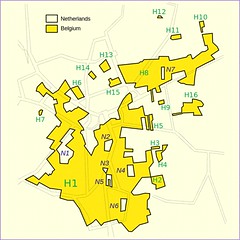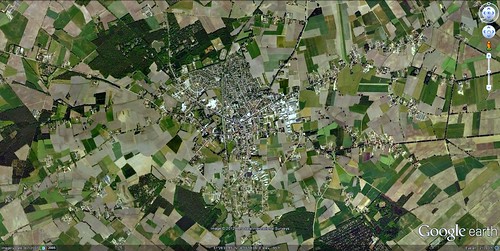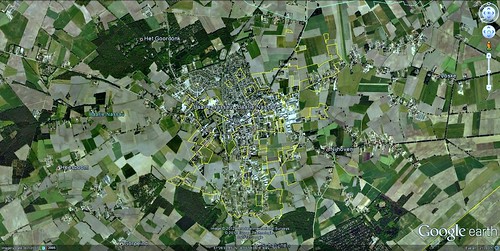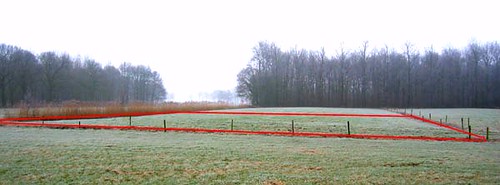Where am I? Given crazy jurisdictional borders, it's hard to tell

Posted February 17, 2012 at 1:27PM
We’re looking at a satellite image of Netherlands countryside surrounding the Dutch town of Baarle-Nassau, home to just under 7,000 residents. (Note the relative absence of sprawl to muck up the farmland.)
Or are we? Look closely at the yellow lines (or click here for a larger image to see them better). Actually, some – but quite clearly not all – of the town isn’t Dutch at all, but rather the Belgian municipality of Baarle-Hertog, population 2300. How can you tell which part of the town is in the Netherlands and which is in Belgium? It’s complicated.
Remarkably, the Belgian town consists of 24 noncontiguous parcels of land. 21 of them are surrounded by the Netherlands. while three are on the border between the two countries and thus share a jurisdictional boundary with the rest of Belgium, if also with the Netherlands and if not with each other. And get this: there are Dutch enclaves within the Belgian enclaves that are within the Netherlands. And, actually, the main part of Baarle-Hertog is about five miles southwest of the portions you see here, and completely in Belgium. Told you it was complicated.
 Here in the DC area, I frequently ride my bike down Western Avenue, where the houses on one side of the street are in DC and those on the other are in Maryland. I grew up about an hour or so from the small city of Bristol, which is in Virginia or Tennessee, depending on where you are. All metropolitan regions in the US have to deal with a multiplicity of jurisdictions (284 in metro Chicago, for example), and it’s a major problem when it comes to understanding or logically addressing the regional economy or environment.
Here in the DC area, I frequently ride my bike down Western Avenue, where the houses on one side of the street are in DC and those on the other are in Maryland. I grew up about an hour or so from the small city of Bristol, which is in Virginia or Tennessee, depending on where you are. All metropolitan regions in the US have to deal with a multiplicity of jurisdictions (284 in metro Chicago, for example), and it’s a major problem when it comes to understanding or logically addressing the regional economy or environment.
But it still isn’t quite this nuts. The Wikipedia entry for Baarle-Hertog tries to sort it out for us:
“The border is so complicated that there are some houses that are divided between the two countries. There was a time when according to Dutch laws restaurants had to close earlier. For some restaurants on the border it meant that the clients simply had to change their tables to the Belgian side.
“The border's complexity results from a number of equally complex medieval treaties, agreements, land-swaps and sales between the Lords of Breda and the Dukes of Brabant. Generally speaking, predominantly agricultural or built environments
became constituents of Brabant and other parts devolved to Breda. These distributions were ratified and clarified as a part of the borderline settlements arrived at during the Treaty of Maastricht in 1843 . . .
“The BBC reported from Baarle as part of their coverage of the 2009 European elections. The reporter was filmed as if he was with his twin in a cafe, each on the one side of the border. The "twin" on a chair on the Belgian side explained what he was entitled to in Belgium. He mentioned compulsory voting, but maintained he was allowed to build a house 300 metres (328 yards) away from a pig farm, which is illegal in the Netherlands.”
Note the border indicated on the street surface where the café in the photo, above, sits. And see that area of farmland marked in red in the photo just below? It’s in Belgium; the rest you see is in The Netherlands.
Dan Lewis, on his quirky and fascinating site Now I Know, reports that buildings sitting within both countries pay taxes according to where their front doors are located. Some shops have apparently moved their doors “as a tax dodge of sorts.” Indeed, there was a complicated legal case in which a bank engaged in money laundering had a front door in the Netherlands, but a vault in Belgium. Lewis’s article links to this photo of a house in both countries and this one of a beer store apparently divided in its interior.
Thanks to Caryn Conrad for the tip to this story.
Move your cursor over the images for credit information.
Please also visit NRDC’s Sustainable Communities Video Channel.


